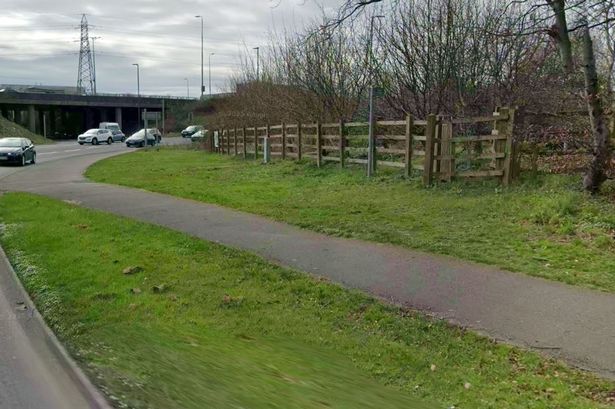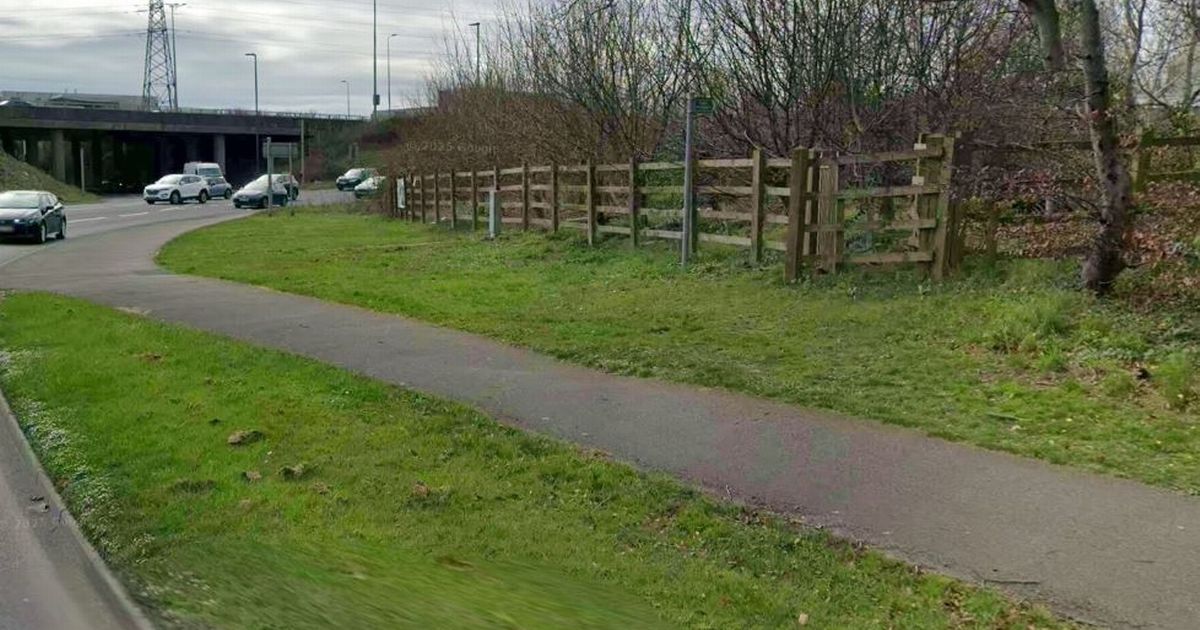South Gloucestershire councillors have approved a diversion The footpath next to the M5 slip road at the Almondsbury junction that was blocked by contractors (Image: Google Maps)
The footpath next to the M5 slip road at the Almondsbury junction that was blocked by contractors (Image: Google Maps)
A popular public footpath next to the M5 near Bristol was mistakenly blocked by work to widen a slip road and create parking spaces for emergency vehicles.
Contractors for National Highways failed to realise they were obstructing an official path for walkers at the northbound exit of junction 16 at Almondsbury, a South Gloucestershire Council meeting heard.
The public rights of way and commons registration sub-committee has now approved a retrospective request to divert the route to the new layout on the ground, although this requires public consultation.
A report to the meeting said: “Highways England [as the government agency was then called] were well under way with their scheme when it was discovered that the legal line of the footpath would be severely compromised due to the new embankment works and fencing and it was several more months before this was understood by Highways England.
“There may have been confusion because, over the years, the embankment has been previously modified and planted and the walked route of the footpath had already been repositioned at the top of the bank.
“However, the legal line could still have been walked, albeit with difficulty due to the trees, until the current works brought it into the bounds of the M5 carriageway.
“Although not included in the application, the northern end of the path will also be included in this order because it too has been ‘moved’ over the years by fencing and tree planting and officers have taken the view that the whole path which has been affected by Highways England works should be included.”
The report said it was acceptable for the usual expected two-metre width for a footpath to be just 1.5 metres in most places because the gap between the new motorway fencing and the adjacent National Highways depot was barely two metres and there was also hedging narrowing it.
It said there were a number of mature trees at the northern end of the route, which should remain standing, although the agency had agreed to remove more recently planted holly bushes.
The report said: “The proposed diversion will be substantially as convenient to the public because the termination points are the same and the overall length of the proposed new alignment is a matter of a few metres different.”
It said there were no objections from consultations with user groups, the parish council, ward councillors and statutory bodies.
South Gloucestershire Council public rights of way officer Lindsay Saunders said: “The legal line of the footpath was not as close to the top of the bank and the boundary fence and hedge as the walked route, and consequently when the works were carried out to widen the slip road, the legal line of the footpath was left essentially dangling in mid-air.
“Unfortunately the contractors did not initially understand this.
“They could see they had left space for pedestrians at the top of the bank but did not understand the legal implications, hence it being retrospective.
“It was discovered that works in 2015 had also moved the legal line of the footpath at the northern end towards the police station, and a considerable amount of planting had taken place which further narrowed the available width.
“But in its favour there have been no complaints from the public and the path is very well used given its location.
“So the proposed route reflects what is used on the ground and National Highways has agreed to remove some of the more obstructive small trees at the northern end to add a little extra width.
“Overall the path should achieve a walkable width of 1.5-metre at the top of the embankment with a two-metre overall legal width and a walkable width of 1.3 metres through the trees.
“This is less than the width laid out in the council’s policy but given that National Highways cannot now deliver more width without engineering works and the removal of small trees it seems to be preferable to take the pragmatic approach and still have a relatively pleasant path.
“More width will become available at the northern end over time as more mature trees are thinned or eventually die.
“On this basis, officers are satisfied that the proposal meets the legal requirements even if it doesn’t meet the council’s own policy, and in view of the situation it is requested that the committee agrees to the making of the order.
“It will be stressed to Highways England that no further narrowing will take place.”
Councillors approved the diversion, which will be confirmed if there are no objections during public consultation, or if there are then it would come back to the sub-committee and referred to the Environment Secretary for a decision.
